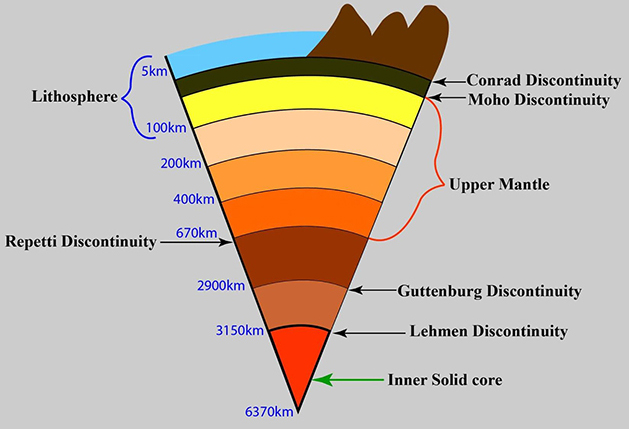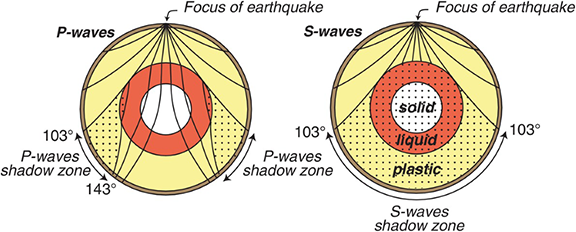- Filter By :
- Geography
- History
- Indian Heritage & Culture
- Indian Society
-
Q. Discuss the internal structure of the Earth and comment on S and P-waves shadow zones with suitable diagrams.
02 Jun, 2021 GS Paper 1 GeographyApproach
- Start the answer by briefly mentioning the interior of earth.
- Discuss the differentiation of layers of earth and role of seismic waves in the study of the interior of earth.
- Conclude Suitably.
Introduction
On the basis of seismic investigations, the earth can be divided into three major layers: crust, mantle, core.
Body
Differentiation of layers of Earth
- Crust: The outer superficial layer of the earth is called the "crust". In continental regions, the crust can be divided into two layers.
- The upper layer which is less dense and granitic in character, is known as "sial", while the lower layer which is basaltic in character is known as "sima".
- It extends down to 30 or 40 kilometer beneath continents and to about 10 km beneath ocean basins
- Mantle: The mantle is located beneath the earth's crust and has a thickness of about 2900 km. It has been divided into two layers: (i) upper mantle, and (ii) lower mantle.
- The boundary between these is at about 700 km depth.
- The upper mantle contains a most important zone called the "asthenosphere". It is located at depths between 50 to 100 km.
- This zone provides lava for volcanic eruptions.
- Core: The core (inner core and the outer core) accounts for just about 16 per cent of the earth's volume but 33% of earth’s mass. Like Mantle, core can also be distinguished into two layers namely outer core and inner core.
- The outer core is composed of iron mixed with nickel and trace amounts of lighter elements.
- The outer core is not under enough pressure to be solid, so it is liquid even though it has a composition similar to the inner core.

Role of Seismic Waves in Study of Interior of Earth
The study of the passage of seismic waves through the earth has helped in knowing the structure of the earth's interior and in defining the physical properties of various layers. For example:
- The "outer core" was discovered when it was found that P-waves were bent inwards thereby producing a "shadow zone" at the surface.
- Since the S-waves do not pass through the outer core, it is concluded that it may be in the liquid state.
Conclusion
Seismic waves travel different velocities depending on the nature of the layer in which they are travelling. Thus they not only indicate the position of each layer but also give clues as to its composition.
To get PDF version, Please click on "Print PDF" button.
Print PDF





